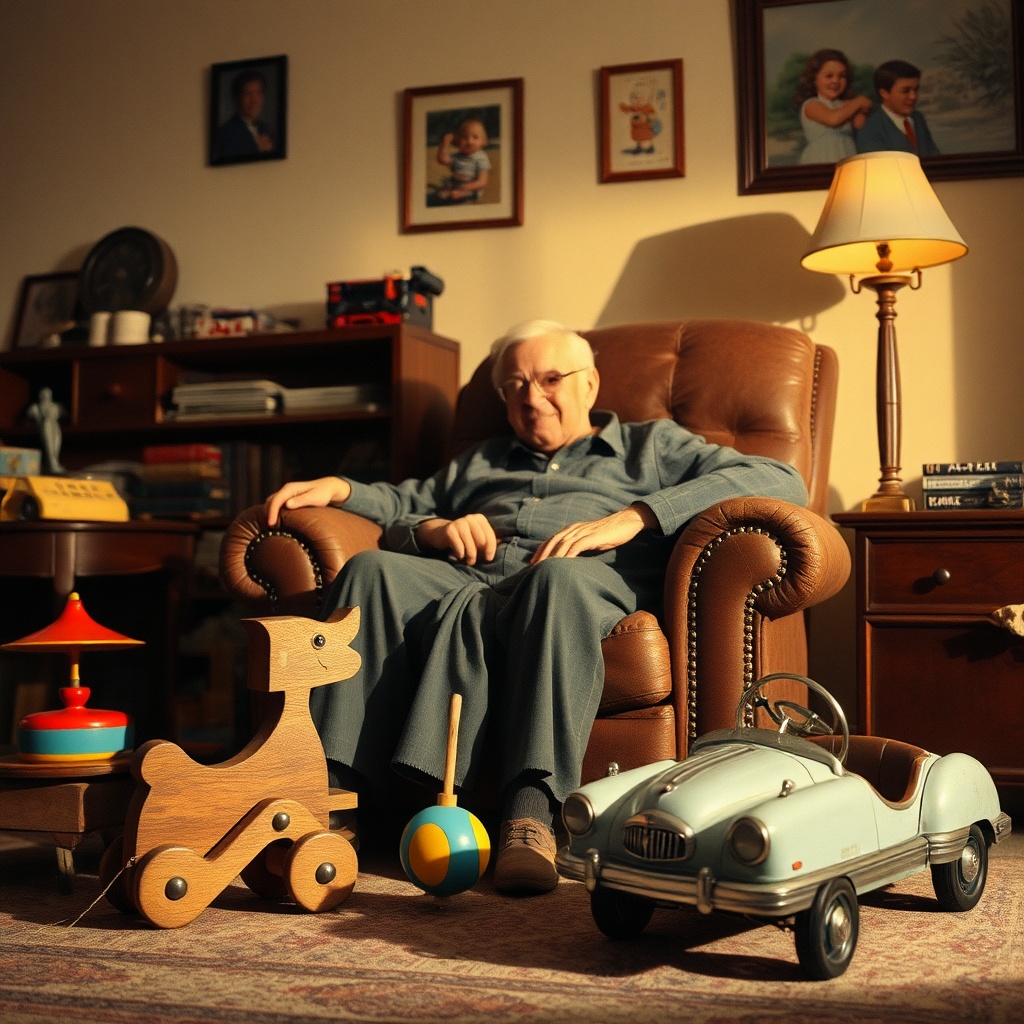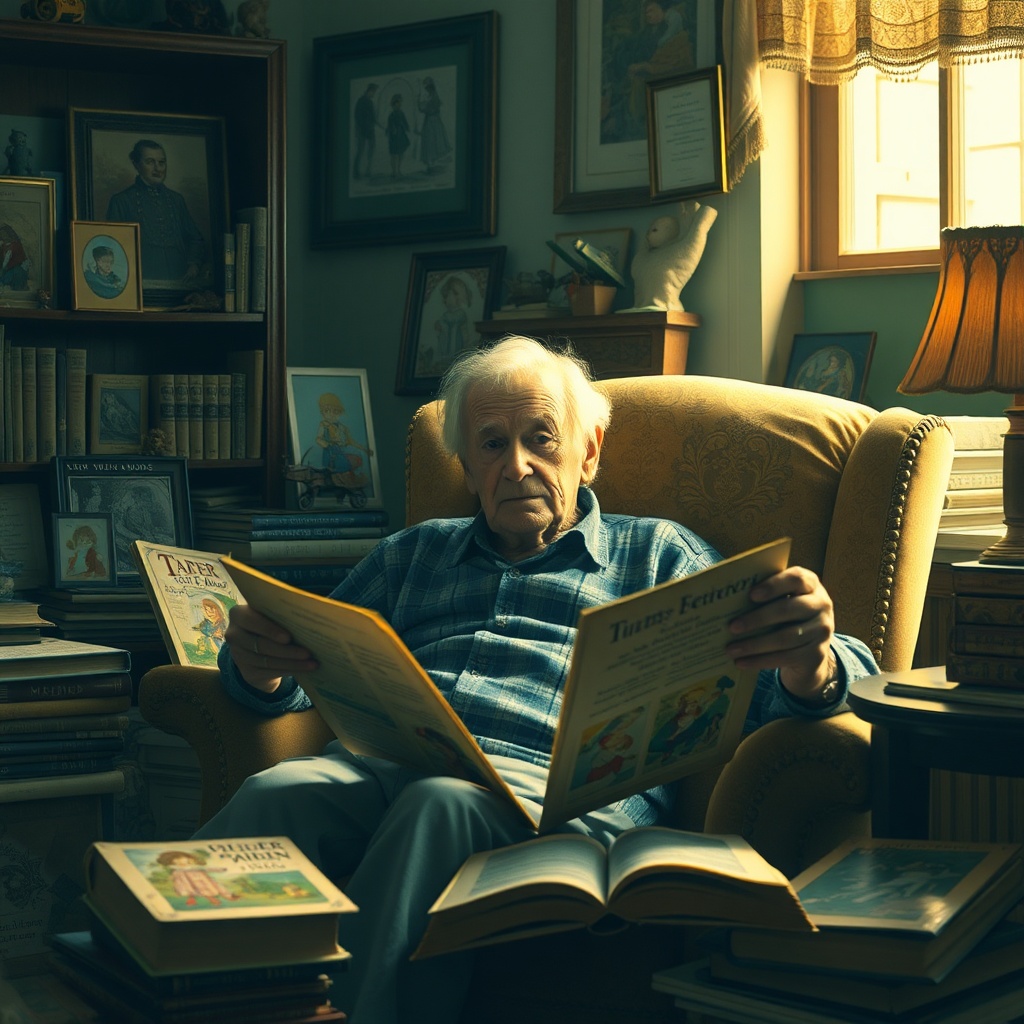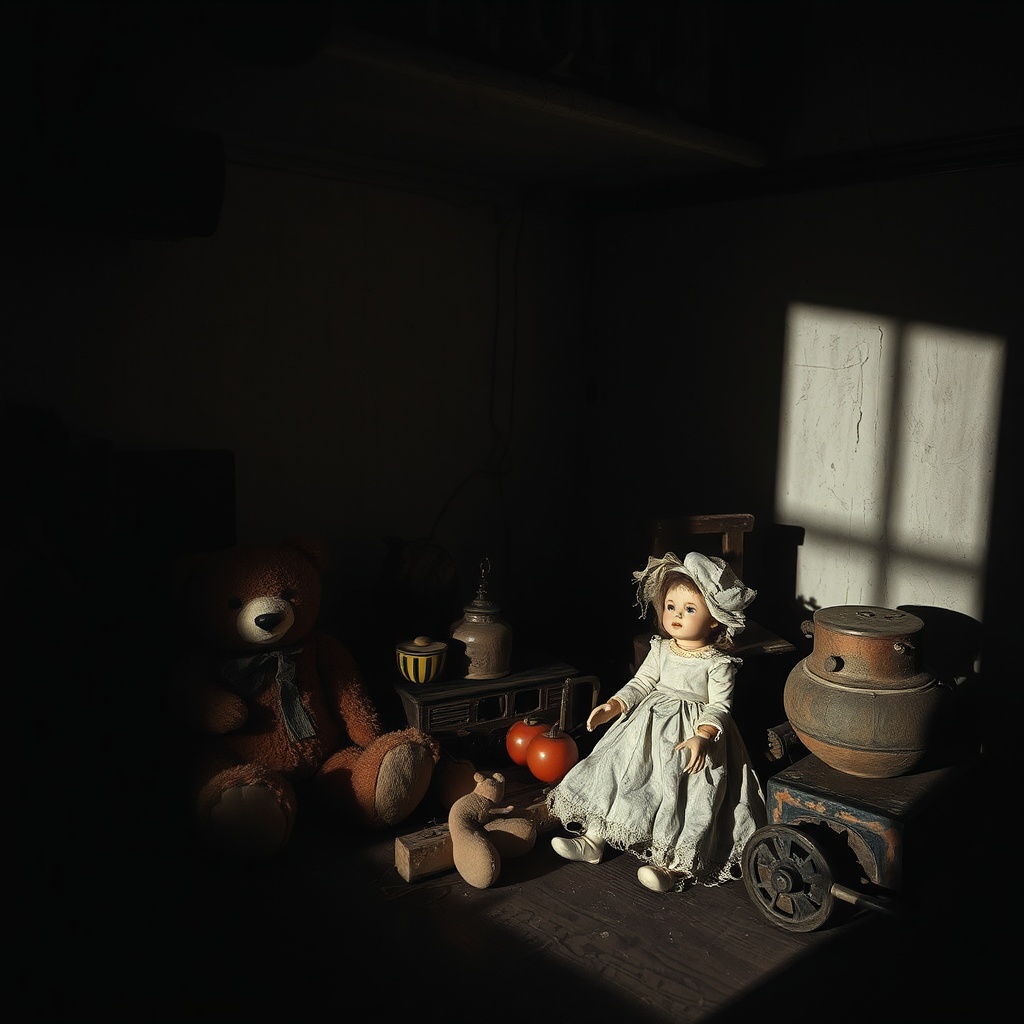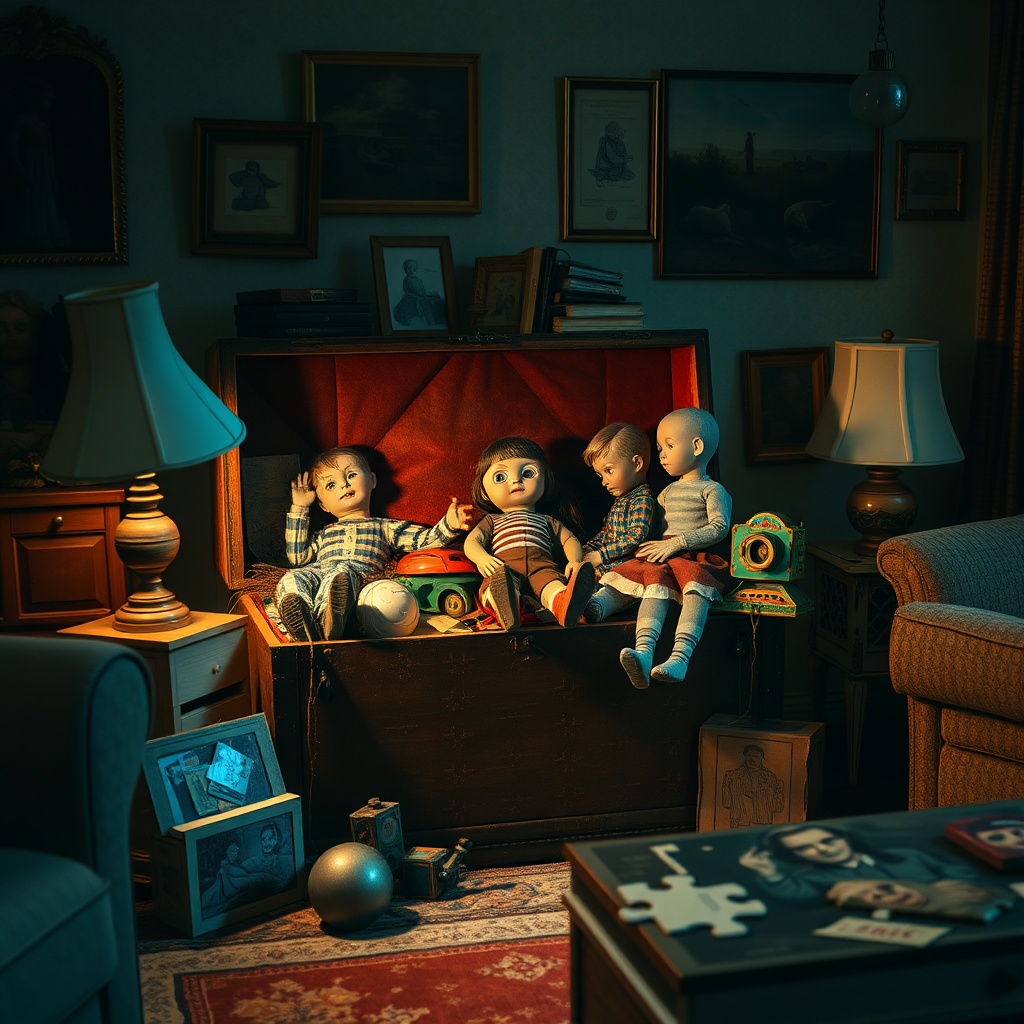Unraveling the Shadows: How 1960s Toys Masked Hidden Dangers

In the vibrant world of the 1960s, toys were more than just playthings; they were windows to imagination and creativity. However, beneath the colorful exteriors lay hidden dangers that parents often overlooked. Join us as we explore the darker side of these seemingly innocent toys.
The Allure of 1960s Toys
During the 1960s, toy manufacturers flooded the market with innovative designs and themes, captivating children and parents alike. Some of the most popular toys included:
- Barbie Dolls: Iconic fashion dolls that encouraged imaginative play.
- G.I. Joe: Action figures that sparked adventure and storytelling.
- Easy-Bake Oven: A miniature kitchen that promised delightful baking experiences.
- Slinky: A simple metal coil that captivated with its mesmerizing movements.
Hidden Dangers in the Design
While these toys were marketed as safe and fun, many contained materials and designs that posed serious risks:
- Lead Paint: Many toys were painted with lead-based paint, which could be harmful if ingested.
- Choking Hazards: Small parts on toys like G.I. Joe posed a risk to younger children.
- Flammable Materials: Some toys were made from materials that easily caught fire, leading to dangerous accidents.
Regulatory Oversights
During the 1960s, toy regulations were not as stringent as they are today. Here’s a brief overview:
| Year | Event |
|---|---|
| 1962 | Consumer Product Safety Act introduced, but enforcement was weak. |
| 1966 | First major toy recalls began, but many unsafe toys remained on the shelves. |
Case Studies: Notorious Toys
Let’s take a closer look at some specific toys that became infamous for their hidden dangers:
- Barbie’s Dream House: Contained sharp edges and small accessories that could pose a risk.
- Lawn Darts: Heavy metal tips that could cause serious injuries.
- Choking Hazard Toys: Toys with small parts that were not clearly labeled as unsafe.
Parental Awareness
As a concerned parent or grandparent, understanding the potential risks associated with toys is crucial. Here are some tips:
- Inspect Toys: Look for any signs of wear and tear or small parts that could be harmful.
- Read Labels: Always check for safety warnings and age recommendations.
- Stay Informed: Keep up with product recalls and safety reports.
The 1960s may have been a golden age for toys, but it was also a time of significant risk. By unraveling the shadows of these perilous playthings, we can ensure that future generations enjoy safe and enjoyable play experiences.
Beyond Innocence: The Chilling Stories Behind Childhood Favorites

Unmasking Nostalgia
As we reminisce about our childhood, toys often symbolize innocence and joy. However, many beloved playthings from the 1960s harbor unsettling tales that unveil a darker side. Let’s delve into these chilling stories, shall we?
The Cautionary Tale of the Easy-Bake Oven
Initially marketed as a delightful baking tool for young chefs, the Easy-Bake Oven was a source of excitement. But did you know that the original models had heating elements that could cause severe burns? Many children experienced accidents, leading to a reconsideration of safety regulations. Remember your own baking adventures? What was your favorite recipe?
A Barbie with a Dark Secret
Barbie, the iconic doll, was introduced in 1959 and quickly became a staple in many homes. Yet beneath her glamorous exterior lies a troubling narrative. The early Barbies were often criticized for promoting unrealistic body images and materialism. Not just a doll, but a reflection of societal expectations. How did you perceive Barbie when you played with her?
The G.I. Joe Dilemma
While G.I. Joe was celebrated as a revolutionary action figure, he also represented the militarization of play. Many parents were concerned about the violent undertones of war-themed toys. Did you ever have a G.I. Joe? What adventures did you create with him, and did they reflect the world around you?
Choking Hazards and the Chatter Telephone
The once-beloved Chatter Telephone was more than just a cute toy; it was a potential hazard. The small parts, designed for playful interaction, posed choking risks for younger siblings. Can you recall the laughter that echoed as you pulled it along? Were you ever worried about your toys being safe?
The Unsettling Reality of Silkstone Dolls
Silkstone dolls captivated many with their beauty, yet they also became a source of distress. The materials used in their production raised health concerns, resulting in recalls and safety warnings. They were cherished, yet they beckoned a question: at what cost does beauty come? Did you collect any dolls that sparked similar worries?
Reflecting on Our Playthings
As we explore these stories, we invite you to share your own experiences. Did any of these toys shape your childhood memories? What tales of your playtime echo through the years? The toys may seem innocent, but their stories remind us of the complexities that lie beneath.
Conclusion: The Legacy of Our Playthings
In the end, while these toys brought joy and laughter, they also carry with them lessons about safety, societal norms, and the passage of time. As we remember our childhood favorites, let’s reflect on how they shaped us and the world we live in today.
Nostalgic Nightmares: Revisiting the Dark Truths of Classic Playthings

Introduction to the Shadows of Playtime
As we turn back the pages of time to the 1960s, a decade known for its vibrant culture and iconic toys, we must also confront the darker undercurrents that ran alongside these cherished playthings. What were the hidden dangers lurking behind the cheerful façades of our beloved childhood toys? Let us embark on this journey together.
The Allure of Classic Toys
Many of us remember the thrill of unwrapping a shiny new toy on birthdays or holidays. From Barbie dolls to GI Joe action figures, these items were more than just playthings; they were gateways to imagination. However, beneath the colorful surface, some toys harbored unsettling truths.
The Hidden Dangers
Take a moment to think about those lead-based paints that adorned many toys. Yes, the same bright colors that brought joy to our childhoods posed serious health risks. Did you know that many toys were painted with materials that could lead to serious health issues?
Moreover, how about the sharp edges on certain toys? Many children experienced cuts and bruises, and some toys were even recalled due to serious injuries. Can you recall any stories from your childhood about a friend getting hurt while playing?
The Murky History of Popular Toys
Let’s revisit some specific toys that were once the pride of our playrooms:
Easy-Bake Oven: This seemingly innocent toy allowed children to bake real cakes using a light bulb. However, the potential for burns was significant. Did you ever have one of these?
Cap Guns: While they provided hours of imaginative play, cap guns often led to confusion with real firearms. Have you or someone you knew ever had a close call?
Rock ‘Em Sock ‘Em Robots: These battling robots were a fun way to engage in competition, but they also led to aggressive play and rivalries. How did these toys influence your friendships?
Reflecting on Our Childhoods
As we reminisce about these toys, it’s essential to ask ourselves: what did we learn from them? Did they teach us resilience, or did they instill fear? Reflecting on these questions can help us understand how our childhood experiences shaped our perspectives as adults.
The Legacy of 1960s Toys
Despite their flaws, many of these toys have left an indelible mark on our lives. They were a part of our growth, teaching us lessons about safety, creativity, and friendship. How do you think these experiences have influenced your adult life?
Conclusion: Embracing the Past
As we conclude this exploration of nostalgic nightmares, let’s cherish the memories while acknowledging the lessons learned. The toys of the 1960s were both delightful and dangerous. Embrace this duality as part of your unique journey.
Share Your Memories
What are your thoughts on the toys of your childhood? Did you have any frightening experiences with them? Feel free to share your stories and reflections below.
Playtime Perils: The Unspoken Risks of 1960s Toys We Cherished
As we reminisce about the toys of our childhood in the 1960s, it’s easy to feel a wave of nostalgia. However, lurking behind the cheerful memories are some unspoken risks that many of us may have overlooked at the time. Let’s explore these perilous playthings together, shall we?
1. The Allure of Lead Paint
Does the vibrant color of your favorite toy still dance in your memory? Many toys from the 1960s were painted using lead-based paints. This practice was not uncommon as manufacturers sought to create eye-catching products. Unfortunately, exposure to lead can lead to serious health issues. Can you recall a toy that you adored that might have been painted with such hazardous materials?
2. Choking Hazards
Picture yourself playing with small army men or intricate dolls. Many toys of that era included tiny parts that were often choking hazards. The thrill of battle or the delight of imaginative play sometimes came with a price. Did you or someone you know ever experience a close call with a small piece?
3. The Dangers of Fire
Remember those charming toy models and kits? Many contained flammable materials. In an age where safety regulations were not stringent, children were often left unaware of any potential fire risks. Have you ever witnessed a toy that caught fire during play?
4. Toxic Materials
Some toys were manufactured using dangerous plastics and other materials that could emit harmful chemicals. While the bright colors and fun designs were captivating, the materials used raised significant health concerns. Can you think of any toys that you later learned were made from questionable materials?
5. Sharp Edges and Dangerous Designs
Many toys were designed with sharp edges and points. Whether it was a toy gun or a model airplane, these designs were not always child-friendly. It’s a wonder how many scrapes and cuts we might have sustained while playing. Do you recall any close encounters with sharp toy edges?
While the 1960s offered a treasure trove of cherished toys, it’s crucial to acknowledge the playtime perils that accompanied them. As we reflect on our past, let’s also share these experiences with younger generations, ensuring that they understand the importance of safety in play. What are your thoughts on the toys of your childhood? Have you shared any stories with family or friends?
Echoes of the Past: How 1960s Toys Shaped Our Fears and Fantasies
The 1960s was a decade of profound change, not only in society but also in the realm of children’s toys. As you reflect on your childhood, consider how these playthings influenced your imagination and instilled certain fears. This exploration invites you to reminisce about the toys that filled your playtime.
The Toys of the 1960s
Let’s take a closer look at some of the iconic toys from the 1960s:
| Toy | Description | Impact on Children |
|---|---|---|
| Barbie | A doll that epitomized fashion and femininity. | Encouraged fantasies about beauty and social status. |
| G.I. Joe | Aimed at boys, this action figure was a symbol of heroism. | Fostered a sense of adventure and militarism. |
| Easy-Bake Oven | A miniature kitchen appliance for baking treats. | Promoted domestic skills and gender roles. |
| Rock ‘Em Sock ‘Em Robots | A two-player game where robots battled each other. | Instilled a sense of competition and aggression. |
Fears and Fantasies
As children played with these toys, they not only engaged in imaginative play but also confronted their fears:
Barbie – Did the perfect image of Barbie create unrealistic standards?
G.I. Joe – Did it normalize violence and warfare?
Easy-Bake Oven – Was it a subtle reinforcement of gender roles?
Rock ‘Em Sock ‘Em Robots – Did it encourage aggressive behavior?
Interactive Reflection
Now, take a moment to reflect:
Which of these toys do you remember the most?
Did any of them instill a fear or fantasy that still resonates with you today?
How did these toys shape your view of the world as an adult?
The toys of the 1960s were more than mere objects; they were vessels for our dreams and nightmares. They shaped a generation’s perceptions of reality, identity, and the complexities of life. As you think back on your childhood, consider how these perilous playthings played a role in forming the tapestry of your memories.
